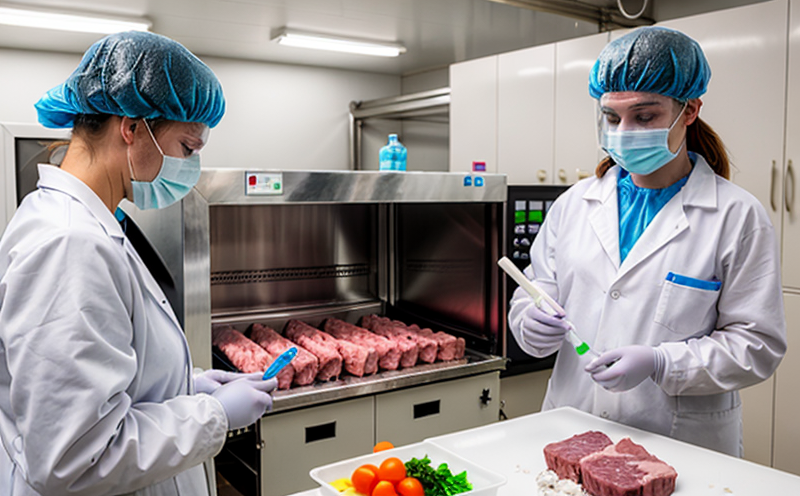ISO 21527-2 Yeasts and Moulds Testing at 21°C
The ISO 21527 series provides a comprehensive framework for the identification, enumeration, and characterization of yeasts and molds in food products. This service focuses on ISO 21527-2, which specifies a method for determining the total count of yeast and mold cells at 21°C. This method is crucial for ensuring that dairy and meat products meet stringent microbiological quality standards.
The testing process involves the following steps:
- Preparation of Specimen: Samples are prepared in accordance with ISO guidelines to ensure accurate counts. For dairy, this includes homogenization followed by dilution if necessary. Meat samples may be minced or ground before preparation.
- Culture Media: Nutrient-rich media is used at 21°C to promote the growth of yeasts and molds. This temperature range ensures optimal conditions for these microorganisms without affecting other components of the sample.
- Incubation Period: Samples are incubated over a period specified in ISO standards, allowing sufficient time for colonies to form on the media. This incubation period is critical as it directly impacts the accuracy and reliability of the test results.
- Counting Colonies: After incubation, colonies are counted manually or using automated colony counters. The count represents the total number of viable yeast and mold cells present in the original sample.
The method is particularly useful for quality managers and compliance officers who need to ensure that dairy and meat products meet specific microbial limits set by international standards like ISO 21527-2. This service helps in maintaining product safety, shelf-life, and consumer confidence.
Testing under these conditions ensures that the results are consistent with global regulations and can be compared reliably across different laboratories. The method is especially important for industries where contamination with unwanted microorganisms could lead to significant quality issues or recalls.
Applied Standards
The ISO 21527-2 standard is widely recognized in the food industry and is applicable not only to dairy products but also meat products. It ensures that testing methods are consistent and reproducible across different laboratories, which is crucial for maintaining quality control and compliance with international standards.
- ISO 21527-2: Determination of total yeast and mould count (21°C)
- Other relevant ISO standards include ISO 6803, ISO 14998, and ISO 11299
The standard specifies the media to be used, incubation temperature, and time required for accurate enumeration of yeast and mold cells. It also includes guidelines on sample preparation and handling to ensure that results are reliable.
Industry Applications
| Application Area | Description |
|---|---|
| Dairy Industry | Ensuring the safety and quality of dairy products by identifying and quantifying yeasts and molds at 21°C. |
| Meat Processing | Monitoring meat products to ensure they meet microbial limits set by ISO standards, thus maintaining product integrity. |
| Food Safety Compliance | Complying with international food safety regulations and ensuring that products are safe for consumption. |
The method is particularly relevant in the dairy sector where contamination can lead to spoilage and product recalls. In meat processing, it helps ensure that final products meet strict microbial limits set by regulatory bodies like the Food Safety Modernization Act (FSMA) in the United States.
Use Cases and Application Examples
- Dairy Quality Control: Regular testing of raw milk samples to ensure that they meet the microbial limits specified by ISO standards.
- Meat Safety Monitoring: Continuous monitoring of meat products during processing to identify potential contamination issues early on.
- R&D Testing: Development and optimization of new dairy or meat products, ensuring that they meet international safety and quality standards.
- Supply Chain Management: Ensuring consistency in microbial counts across different batches and suppliers within the supply chain.
The method is particularly useful for R&D engineers who are developing new product formulations. By using ISO 21527-2, they can ensure that their products meet international standards from the very beginning of development.





